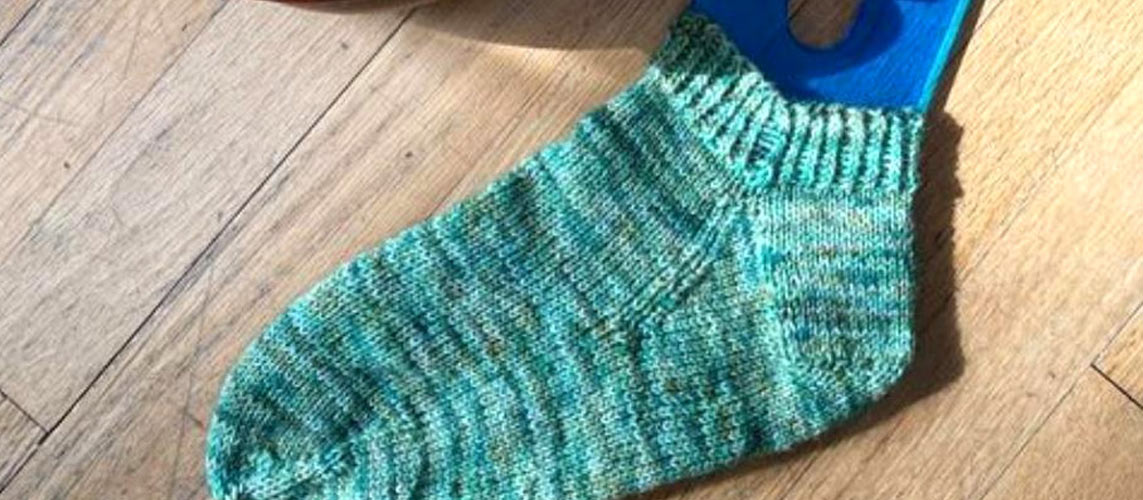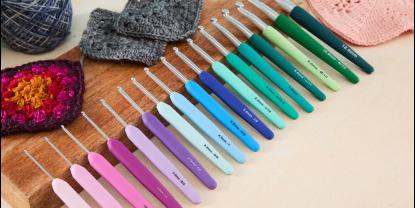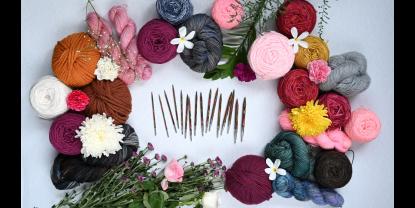Socks are quick and easy knitting projects, perfect for this gift-bearing season. They are the ideal gift for yourself or a loved one. For socks, it's more efficient to knit in the round. This gives us the option of circular knitting needles as well as double-pointed needles. The set of five needles of DPNs is the oldest option to knit socks and small circumference projects and to date loved by many knitters but now circulars are also catching up. Now with a range of needle lengths from 25 m (10 inches) to 120 cm (47 inches), knitters can make socks with the smallest needles as well as the magic loop with the extra long options. Previously we’ve discussed the best knitting needles for socks, in this blog we’ll help you make a pair.
Let’s get started.
How to choose Circular Knitting Needles for Socks
If you are going ahead with a knitting pattern you will have all the information about needle size and length. But, then you must start the project by knitting a gauge swatch. Start with the same needle size and yarn to get the gauge. You can go up or down a size, as even minor size difference matters a lot in projects such as socks.
If you are planning to make socks with your own design, choosing circular needles depends on the method of knitting. You can start on one tiny pair of circulars, preferably 25 cm as a general rule is that the length of circular needles must be smaller than the circumference of the project. Or, you could go ahead with the magic loop. This means a knitting needle length between 80 - 120 cm where the cable must be flexible. Refer to our guide on how to choose the best circular needles for the magic loop. For the needle size, you can choose from a range of sizes 2.00mm (US 0), 2.25mm (US 1), 2.50mm (US 1.5), 2.75mm (US 2), 3.00mm (US 2.5) or 3.25mm (US 3) for light weight yarns. If you would like to experiment with a different yarn weight, the label will mention the best needle size.
Also, grab some 300 yards of fingering-weight sock yarn. If you have leftovers of the same yarn weight in small quantities you can use it up to make a colourful sock. All you have to do is use the yarn color for at least three or for rounds to appear like stripes.
For knitting accessories, make sure to have some stitch markers, sharp scissors, a darning needle and a knitting bag to keep your project.
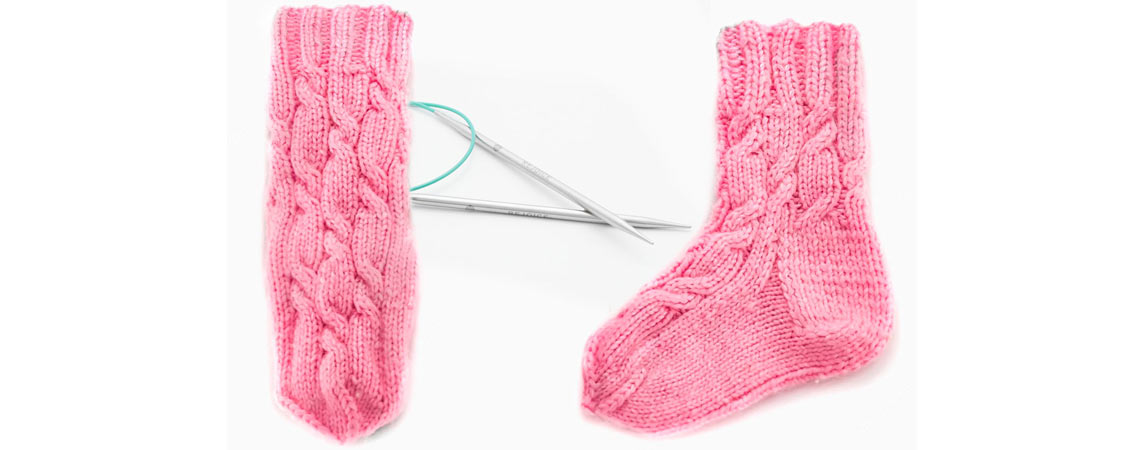
Now with your supplies, knit a gauge swatch. The swatch for socks helps prevent many challenges and mistakes. You can refer to our guide on how to get the right knitting gauge. After the tension square is finished, wash and block. Once dry, measure the row and stitch count.
Cast On: Use a stretchy long tail cast-on method. Say, for example, let’s take 60 stitches on a 2.25 mm (US 1) needle. If you are knitting on a 25 cm circular needle, just join the round. Use the invisible join by simply casting an extra stitch and slipping it into the other knitting needle. If you are knitting on a 100 cm circular needle, cast stitches on one needle tip. Divide them equally on the other needle. Arrange your cables so that they make a loop on both sides.
Knitting the Cuff: The cuff requires a stretchy fabric. Work one inch of K2, P2, or whatever ribbed stitch patterns you love. Go more than an inch if you like. There are no rules but your preference.
Knit the Leg: Work in a stocking stitch pattern (one row of knit and one row of purl), or whatever stitch you love for about 7 inches. Just knit continuously in the round. For the magic loop just manage the cables while you knit on the needles.
Knit the Heel: This is a tricky part. You can introduce your double-pointed knitting needles here. But, there is no rule or need to change. The heel is worked in two parts. You can keep half of your stitches resting on the needle while you work on the other half. The turn of the heel can be worked in any method you prefer.
Gusset: Most knitters are not fond of knitting the gusset part of the sock but soldier through. Gusset Decreases: shape the sock. Many knitters prefer short rows while others have their own preferences.
Knit the Foot: Now you will have the same count of stitches as you have for cast-on. The sock is nicely shaped, give it a try. Continuing knitting until the foot is two inches less than the desired total foot length.
Knit the Toe: For knitting the toes, bid goodbye to the tiny circular needle as you have to switch to two double points while knitting with the third as there are very few stitches. The magic loop can still work.
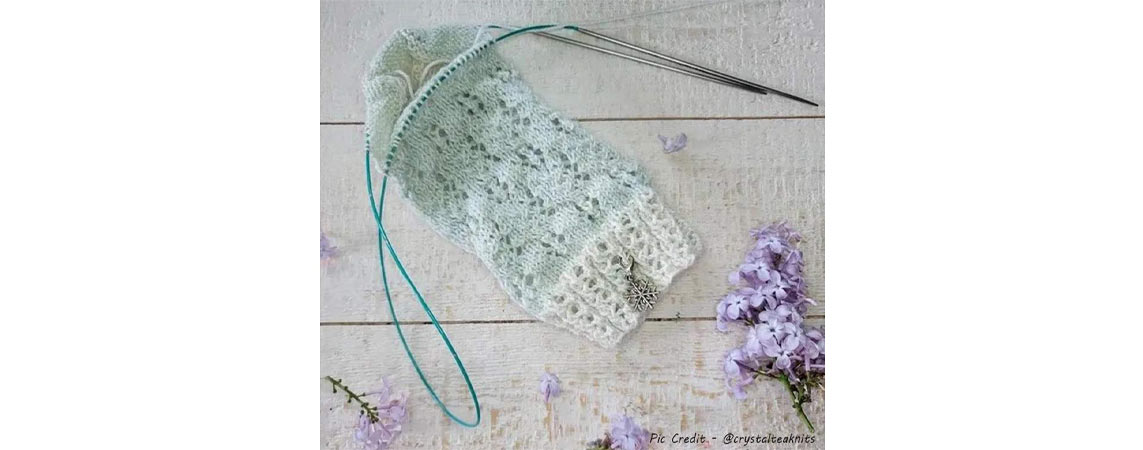
Cut yarn and graft the toe with the Kitchener stitch or any other method you prefer. One sock is finished. You can weave in all the yarn ends.
Now continue with the same steps for the other pair of socks. The first sock is where most challenges present themselves. By the time you are knitting the second sock, you have the muscle memory as well as practice to finish off the project at the earliest. Once you’ve successfully completed some basic pairs, introduce cables and textured stitches to your socks.
So, for your socks whether you prefer double-pointed needles or tiny circular or smooth needles for the magic loop, explore the Mindful Collection. The stainless steel knitting needles are a dream come true for knitters. They are smooth and have sharp tips that work will all kinds of yarn. The entire range is focused on the practice of mindful knitting. Follow our blog for more knitting tips, techniques and ideas.


